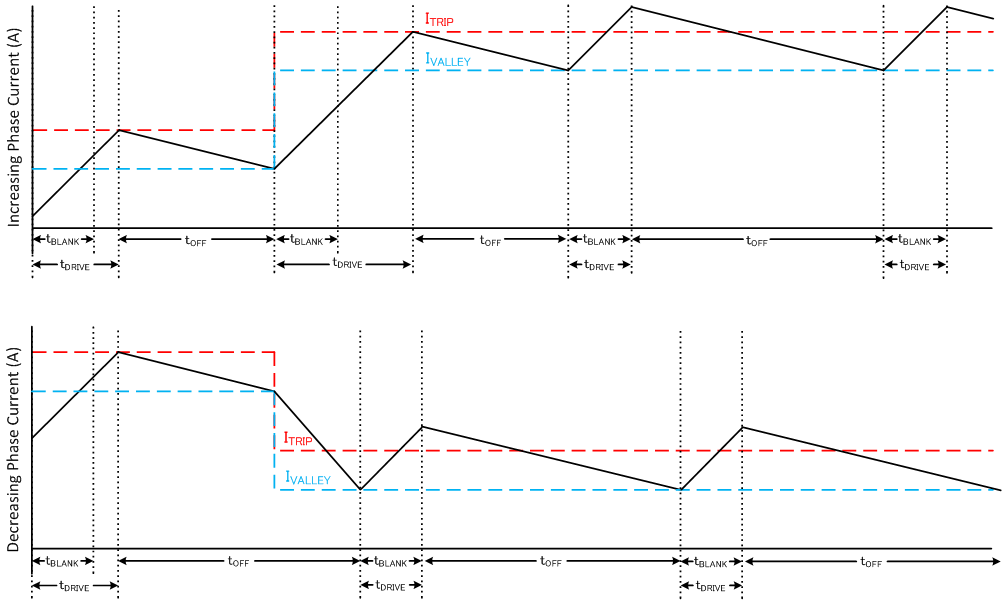JAJSM96 may 2023 DRV8849
PRODUCTION DATA
- 1
- 1 特長
- 2 アプリケーション
- 3 概要
- 4 Revision History
- 5 Device Comparison
- 6 Pin Configuration and Functions
- 7 Specifications
-
8 Detailed Description
- 8.1 Overview
- 8.2 Functional Block Diagram
- 8.3 Feature Description
- 8.4 Device Functional Modes
- 9 Application and Implementation
- 10Layout
- 11デバイスおよびドキュメントのサポート
- 12Mechanical, Packaging, and Orderable Information
8.3.4.1 Smart tune Ripple Control
 Figure 8-7 Smart tune Ripple Control Decay Mode
Figure 8-7 Smart tune Ripple Control Decay ModeSmart tune Ripple Control operates by setting an IVALLEY level alongside the ITRIP level. When the current level reaches ITRIP, instead of entering slow decay until the tOFF time expires, the driver enters slow decay until IVALLEY is reached. Slow decay operates by turning on both low-side MOSFETs, allowing the current to recirculate. In this mode, tOFF varies depending on the current level and operating conditions.
The ripple current in this decay mode is 11 mA + 1% of ITRIP, where ITRIP is the regulation current of a particular microstep level.
The ripple control method allows much tighter regulation of the current level, thereby increasing motor efficiency and reducing audible noise and vibration. Smart tune Ripple Control can be used in systems that can tolerate a variable off-time regulation scheme to achieve small current ripple in the current regulation.